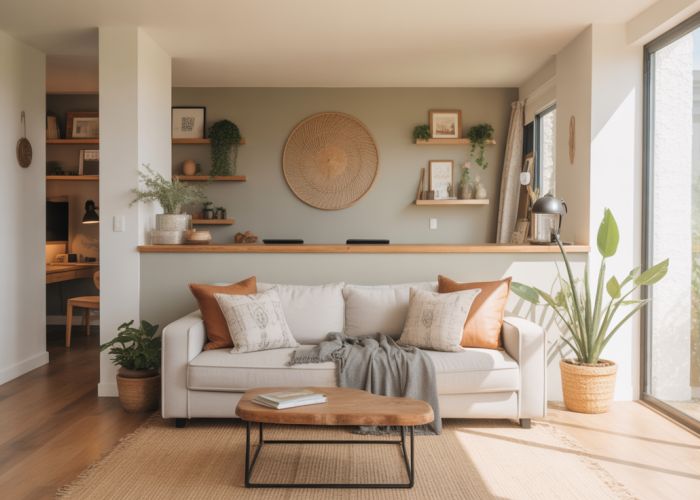Seeking a stylish yet functional space division? The pony wall divider offers a perfect blend of openness and privacy. Interior designers often leverage the versatility of these walls in renovations. The National Association of Home Builders recognizes the pony wall divider as an efficient solution for defining areas. When planning your project, consider using a laser level to ensure precise alignment during the installation of your pony wall divider. Many homeowners are increasingly exploring options for pony wall dividers because of their aesthetic and practical impact.

Crafting the Ultimate "Pony Wall Divider" Article: Layout & Structure
This outlines the ideal article structure for a piece focused on "pony wall dividers," ensuring it’s informative, practical, and easy to understand. We will emphasize designs and installation, with the primary goal of providing useful information.
Understanding the Pony Wall Divider
- Defining the "Pony Wall": Clearly explain what a pony wall divider is. A simple definition is crucial.
- Examples: Briefly compare it to a full-height wall, half wall, and knee wall to clarify distinctions. Visual aids (images) would be highly beneficial here.
- Why Choose a Pony Wall Divider?:
- Open-concept living benefits.
- Defines spaces without complete separation.
- Adds architectural interest.
- Increased natural light.
- Cost-effectiveness compared to full walls.
Design Ideas & Inspiration
- Material Options: This is a key area for visual inspiration.
- Wood: Classic and versatile. Discuss types of wood, finishes, and design styles (e.g., rustic, modern, farmhouse).
- Drywall: Paintable and customizable. Explores different textures and finishes.
- Glass: Modern and allows light to pass through. Options for frosted, patterned, or clear glass.
- Stone/Brick: Adds texture and a natural feel. Examples of different stone/brick types.
- Metal: Sleek and contemporary. Consider steel, iron, or aluminum.
- Style Considerations:
- Modern: Clean lines, minimalist designs.
- Traditional: Ornate details, classic wood finishes.
- Farmhouse: Rustic charm, shiplap accents.
- Industrial: Exposed brick, metal pipes.
- Functional Design Elements:
- Built-in shelving units within the pony wall.
- Integration of electrical outlets and lighting.
- Incorporating decorative niches.
- Use as a bar area or kitchen island support.
Pony Wall Divider Installation: A Step-by-Step Guide
-
Planning & Preparation:
- Measuring & Marking: Accurate measurements are critical.
- Ensuring the base is level.
-
Gathering Materials & Tools: Create a comprehensive checklist. Consider including a table like this:
Tool Use Level Ensuring even surfaces Drill Screwing and pilot holes Saw Cutting lumber Measuring Tape Accurate dimensions Safety Glasses Eye protection Stud Finder Locating wall studs - Checking Local Building Codes: This is important for safety and compliance.
- Measuring & Marking: Accurate measurements are critical.
-
Framing the Pony Wall:
- Building the Base: Detailed instructions on constructing the base frame.
- Attaching to Existing Walls & Floor: Securely anchoring the frame.
- Adding Studs for Support: Correct spacing for structural integrity.
-
Adding the Finishing Touches:
- Sheathing (if necessary): Covering the frame with plywood or OSB.
- Drywalling (if applicable): Applying and finishing drywall.
- Painting/Finishing: Applying paint, stain, or other finishes.
- Adding Decorative Elements: Incorporating chosen design elements.
Troubleshooting Common Issues
- Uneven Floors: Solutions for dealing with uneven surfaces.
- Finding Studs: Tips and tricks for accurately locating studs.
- Ensuring Structural Integrity: Reinforcement methods.
- Hiding Wiring: Techniques for concealing electrical wiring.
- Preventing Moisture Problems: Addressing potential moisture issues.
Cost Considerations
- Material Costs: Breakdown of costs for different materials (wood, drywall, glass, etc.).
- Labor Costs (if hiring a professional): Factors influencing labor costs.
- DIY vs. Professional Installation: Weighing the pros and cons.
- Budget-Friendly Options: Ideas for creating a pony wall divider on a budget.
Maintenance & Care
- Cleaning Recommendations: Specific cleaning instructions for different materials.
- Repairing Minor Damage: How to fix scratches, dents, or cracks.
- Preventing Future Problems: Tips for maintaining the pony wall divider.
Pony Wall Dividers: Your Questions Answered
Need more clarity on pony wall dividers? Here are some frequently asked questions to help you understand their uses and installation.
What are the primary advantages of using a pony wall divider in my home?
Pony wall dividers offer a versatile solution for defining spaces without completely closing them off. They allow natural light to flow through, maintain an open feel, and provide structural support if needed. They also serve as a stylish design element, adding character to a room.
Can I install a pony wall divider myself, or should I hire a professional?
While some experienced DIYers can tackle a pony wall divider installation, it’s often best to hire a professional. Proper framing, anchoring, and finishing are crucial for stability and a polished look. Incorrect installation could compromise structural integrity.
What design options are available for pony wall dividers?
The design possibilities for a pony wall divider are nearly endless. You can choose from various materials like wood, drywall, or even glass blocks. The height, width, and style can all be customized to match your aesthetic. Adding decorative trim or paint further enhances the design.
How do I determine the ideal height for my pony wall divider?
Consider the purpose of the pony wall divider and the overall room design. A lower pony wall divider might define a space without obstructing views, while a taller one offers more privacy. Aim for a height that complements the room’s proportions and meets your functional needs.
So, ready to tackle your own pony wall divider project? We hope this gave you some good ideas! Don’t hesitate to experiment and make it your own, and we know your space will feel that much more special after you’ve added a pony wall divider.